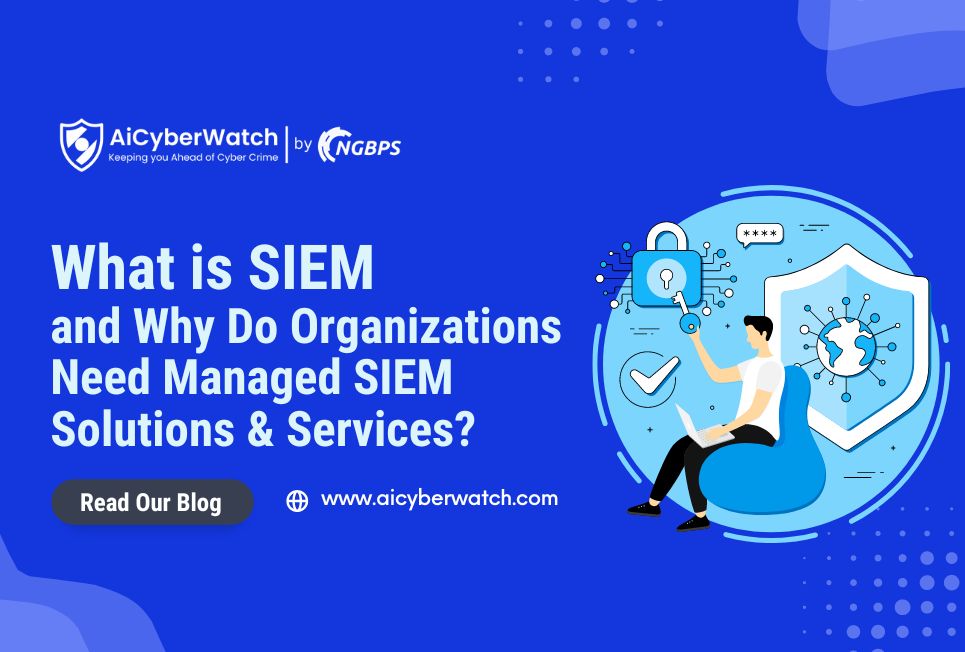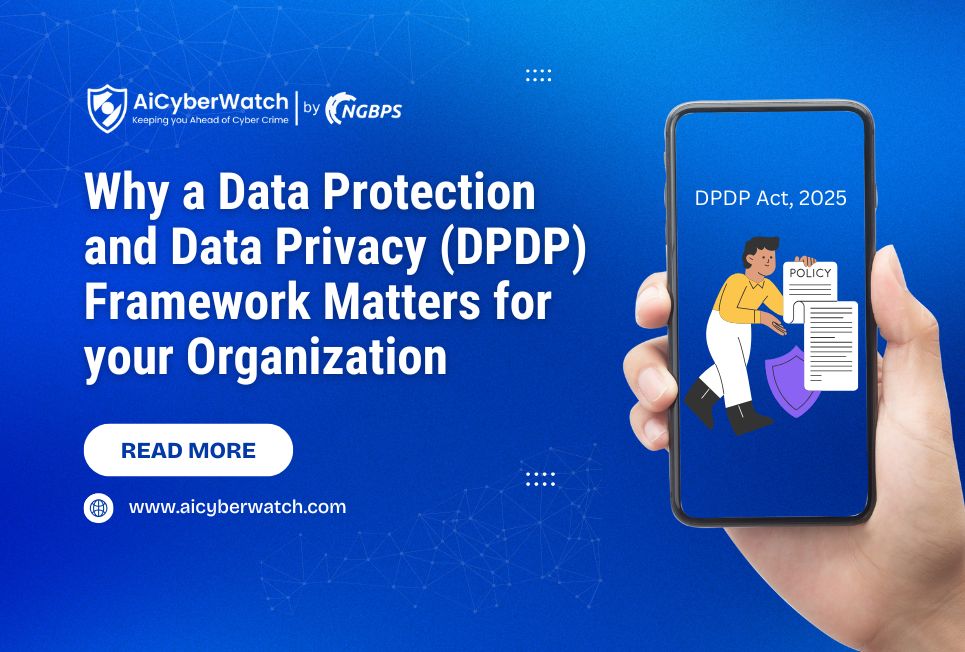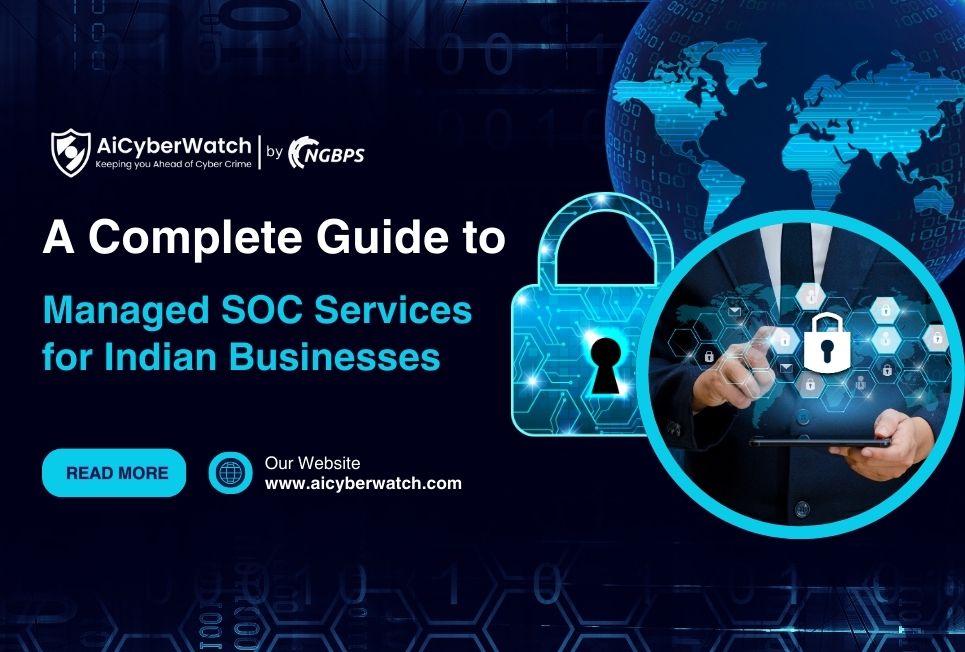In today’s rapidly evolving digital landscape, organizations face more cyber threats. From ransomware attacks to insider threats, the risk to sensitive data and critical systems has never been higher. To combat these threats, businesses are turning to Security Information and Event Management (SIEM) solutions. SIEM provides a comprehensive approach to cybersecurity, combining real-time monitoring, threat detection, incident response, and compliance reporting. However, managing SIEM in-house can be challenging and resource-intensive, leading many organizations to opt for Managed SIEM services. This blog explores what SIEM is, its benefits, and why Managed SIEM solutions are crucial for modern enterprises.
What is SIEM?
SIEM stands for Security Information and Event Management. It is a security solution that aggregates and analyzes activity from many different resources across your entire IT infrastructure. SIEM solutions collect and log security data, such as events and alerts generated by network hardware and applications and correlate it to identify patterns and detect threats in real-time.
Key Components of SIEM
- Log Management: SIEM solutions collect and store log data from various sources such as firewalls, servers, databases, and applications. This log data is essential for identifying and investigating security incidents.
- Event Correlation: SIEM systems correlate events from different sources to detect patterns that indicate potential security threats. By analyzing these correlations, SIEM can identify complex attacks that might go unnoticed when viewing events in isolation.
- Real-Time Monitoring: Continuous monitoring allows SIEM to detect and respond to threats as they occur, minimizing the time between detection and remediation.
- Incident Response: SIEM solutions provide tools for incident response, including automated alerts, workflow management, and detailed reports, enabling security teams to act quickly and efficiently.
- Compliance Reporting: Many organizations are subject to regulatory requirements that mandate the monitoring and reporting of security events. SIEM solutions simplify compliance by providing out-of-the-box reporting templates for standards such as GDPR, HIPAA, and PCI DSS.
Benefits of SIEM
- Enhanced Threat Detection: SIEM solutions improve an organization’s ability to detect threats by providing a unified view of security events across the entire IT infrastructure. This centralized approach helps identify sophisticated attacks that may bypass traditional security measures.
- Faster Incident Response: By providing real-time alerts and comprehensive incident analysis, SIEM enables faster and more effective responses to security incidents. This rapid response can significantly reduce the potential damage caused by cyber threats.
- Improved Compliance: SIEM solutions simplify the process of meeting regulatory requirements by automating the collection, analysis, and reporting of security data. This not only ensures compliance but also reduces the burden on internal resources.
- Operational Efficiency: Automating the detection and response to security events reduces the workload on IT and security teams, allowing them to focus on other critical tasks. This increased efficiency leads to better overall security posture.
- Data Retention and Forensics: SIEM solutions provide long-term storage of security logs, which is essential for forensic investigations. This historical data can be invaluable for understanding past incidents and preventing future attacks.
Challenges of In-House SIEM Management
While the benefits of SIEM are clear, managing a SIEM solution in-house presents several challenges:
- Resource Intensive: Implementing and maintaining a SIEM solution requires significant resources, including skilled personnel, hardware, and software. Many organizations struggle to allocate the necessary resources, leading to suboptimal performance.
- Complex Configuration: SIEM systems are complex and require careful configuration to ensure they accurately detect threats and minimize false positives. Incorrectly configured SIEM solutions can lead to missed threats or an overwhelming number of false alerts.
- Continuous Monitoring and Tuning: Effective SIEM requires continuous monitoring and tuning to adapt to evolving threats. This ongoing maintenance can be burdensome for organizations without dedicated security teams.
- High Costs: The cost of purchasing, deploying, and maintaining a SIEM solution can be prohibitive, especially for small to mid-sized businesses. These costs include not only the SIEM software but also the infrastructure and personnel needed to support it.
- Skill Shortage: There is a global shortage of cybersecurity professionals, making it difficult for organizations to find and retain the skilled staff needed to manage a SIEM solution effectively.
Managed SIEM Solutions
Managed SIEM solutions offer a way to overcome the challenges of in-house SIEM management by outsourcing the deployment, configuration, monitoring, and maintenance of the SIEM system to a third-party provider. These managed services deliver the benefits of SIEM without the associated overhead, making them an attractive option for many organizations.
What is Managed SIEM?
Managed SIEM services involve outsourcing the management of a SIEM system to a Managed Security Service Provider (MSSP). The MSSP is responsible for configuring, monitoring, and maintaining the SIEM solution, providing organizations with 24/7 threat detection and response capabilities.
Benefits of Managed SIEM Solutions
- Expertise and Experience: Managed SIEM providers have extensive experience and expertise in managing SIEM solutions. They employ skilled security analysts who are proficient in identifying and responding to threats, ensuring that the SIEM system is always optimized for peak performance.
- Cost-Effective: By outsourcing SIEM management, organizations can reduce the costs associated with purchasing and maintaining SIEM software and hardware. Additionally, the need for hiring and training specialized staff is eliminated, further reducing expenses.
- 24/7 Monitoring and Support: Managed SIEM services provide round-the-clock monitoring and support, ensuring that threats are detected and responded to at any time. This continuous coverage is essential for protecting against cyber threats that can occur outside of regular business hours.
- Scalability: Managed SIEM solutions can easily scale to accommodate the needs of growing organizations. As businesses expand, the MSSP can adjust the SIEM system to handle increased data volumes and more complex security requirements.
- Reduced False Positives: Managed SIEM providers have the expertise to fine-tune SIEM systems, reducing the number of false positives. This ensures that security teams are not overwhelmed with unnecessary alerts and can focus on genuine threats.
- Access to Advanced Technologies: MSSPs often have access to the latest SIEM technologies and threat intelligence, providing organizations with cutting-edge security capabilities that may be difficult to achieve in-house.
- Regulatory Compliance: Managed SIEM providers can help organizations meet regulatory requirements by ensuring that the SIEM system is configured to capture and report the necessary data. This can simplify the compliance process and reduce the risk of non-compliance penalties.
Why Organizations Need Managed SIEM Solutions
In today’s threat landscape, the need for robust cybersecurity measures is paramount. Here are several reasons why organizations should consider Managed SIEM solutions:
1. Addressing Skill Shortages
The cybersecurity skills gap is a significant challenge for many organizations. Managed SIEM services provide access to a team of experienced security professionals who can manage the SIEM system effectively. This addresses the skills shortage and ensures that the SIEM system is always in capable hands.
2. Enhancing Threat Detection and Response
Managed SIEM services offer advanced threat detection and response capabilities. MSSPs use sophisticated analytics, machine learning, and threat intelligence to identify and respond to threats in real-time. This proactive approach minimizes the risk of breaches and ensures that any incidents are dealt with swiftly.
3. Reducing Operational Overhead
By outsourcing SIEM management, organizations can reduce the operational overhead associated with maintaining an in-house SIEM system. This includes the costs of hardware, software, and personnel, and the time and effort required for continuous monitoring and tuning.
4. Ensuring Continuous Monitoring
Cyber threats can occur at any time, making continuous monitoring essential. Managed SIEM services provide 24/7 monitoring and support, ensuring that threats are detected and addressed promptly, regardless of when they occur.
5. Improving Compliance
Meeting regulatory requirements can be complex and time-consuming. Managed SIEM providers have expertise in regulatory compliance and can help organizations ensure that their SIEM system is configured to capture and report the necessary data. This simplifies the compliance process and reduces the risk of non-compliance penalties.
6. Leveraging Advanced Technologies
Managed SIEM providers have access to the latest SIEM technologies and threat intelligence. This enables organizations to benefit from cutting-edge security capabilities that may be difficult to achieve in-house. MSSPs can also quickly adapt to new threats and incorporate the latest security advancements into the SIEM system.
7. Focusing on Core Business Objectives
Managing a SIEM system in-house can be time-consuming and distract from core business objectives. By outsourcing SIEM management, organizations can focus on their primary business activities while still maintaining robust cybersecurity measures.
Conclusion
In the face of evolving cyber threats, organizations must adopt comprehensive security measures to protect their data and systems. SIEM solutions provide a powerful tool for detecting and responding to threats, but managing SIEM in-house can be challenging and resource-intensive. Managed SIEM services offer a cost-effective and efficient alternative, providing access to expert security professionals, advanced technologies, and continuous monitoring and support.
By leveraging Managed SIEM solutions, organizations can enhance their threat detection and response capabilities, reduce operational overhead, ensure regulatory compliance, and focus on their core business objectives. In an era where cybersecurity is paramount, Managed SIEM services are an essential component of a robust security strategy.







 Call Us
Call Us